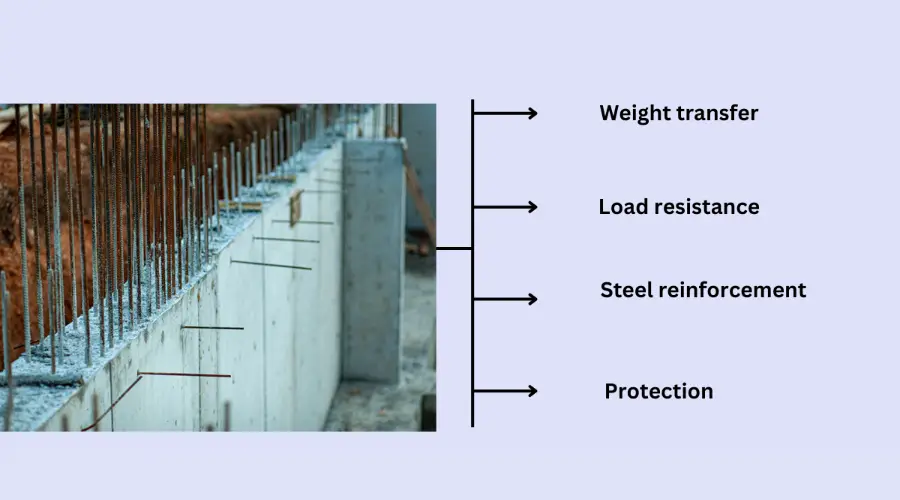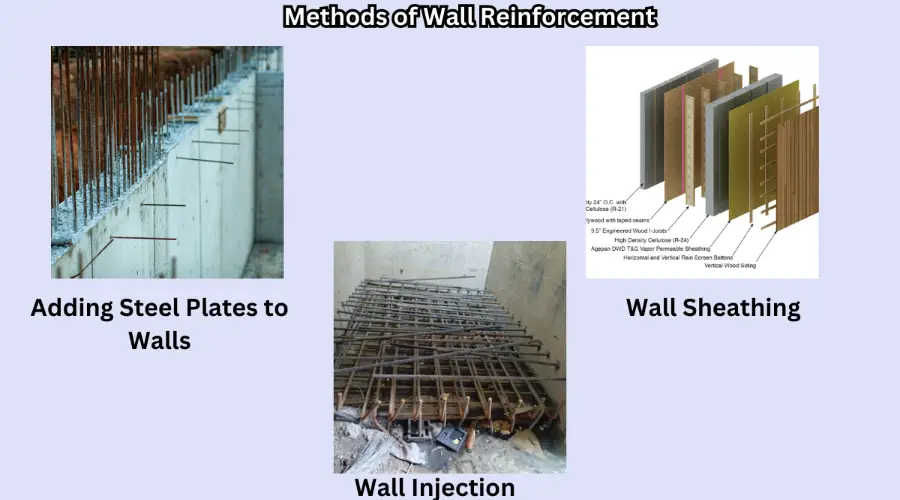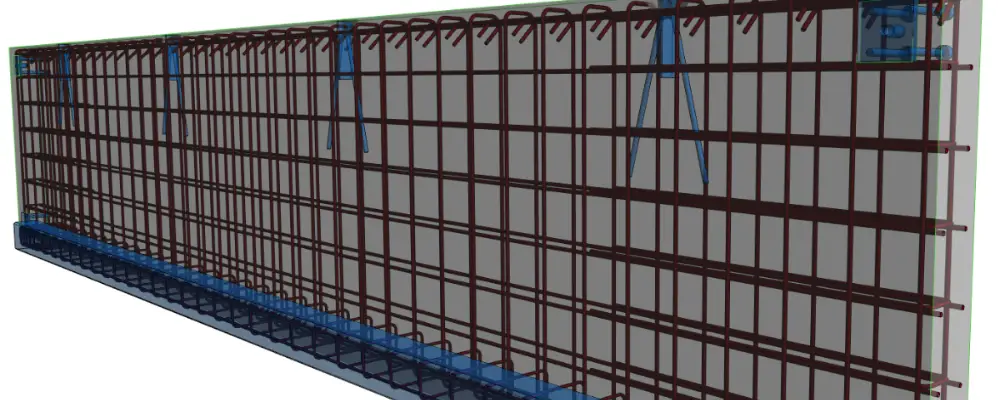Reinforcement is the process of adding materials to the concrete to make the structure strong, durable and last for a long period. Reinforcements can be added during the initial masonry works or on the existing structure to improve its functionality against external forces. These can be installed in different parts of the buildings, such as slabs, walls, foundations, and beams. This blog will look at wall reinforcement and everything you need to know about it.
What is Wall Reinforcement?
Wall reinforcement is the process of strengthening a wall using reinforcement (generally steel), either during construction or during renovation. It is the process of using vertical and horizontal rebars to help the wall withstand forces acting in the horizontal direction, including wind and earthquakes. It improves the load-bearing capacity and stability of the structure.
Purpose of Wall Reinforcement

Walls are an integral part of construction, mainly constructed to transfer the weight from the roof to the foundations of the building and also to provide protection against external forces. Walls usually can withstand loads acting over them, as they have high compressive strength. However, walls must resist the lateral forces acting on them, especially in extreme weather conditions. For this, reinforced steel rods are provided within the masonry, which give the wall strength and stability and help protect the structure from external lateral forces.
Types of Reinforced Walls
Reinforced Concrete Retaining Walls
Reinforced retaining walls are designed to resist the lateral pressure of the soil, rocks or other materials to prevent the building from falling or sliding, especially in regions with varying natural ground levels. To prevent the soil from toppling the wall and causing damage to the structure, adequate reinforced steel rebars are provided in concrete walls.
Reinforced Masonry Walls
Installing reinforcement to masonry walls is crucial to transfer the load from the roof to the foundations, especially in high-rise buildings. The load-bearing walls have the necessary compressive strength to withstand vertical loads. However, the walls must resist lateral forces, especially in extreme seismic conditions. Reinforcement rebars are used within the masonry to resist lateral forces and prevent the building from potential damage. In the case of existing buildings, steel ties are used, especially to stop the wall from bowing outwards.
Reinforced Diaphragm Walls
A diaphragm wall is an underground structure that forms the foundation wall or retaining walls. These walls are extremely deep, and there is a high demand for reinforcements to withstand the high soil pressure. The reinforcements are placed in position and the concrete is carefully poured into the connected wall panels to withstand the lateral soil loads.
Methods of Wall Reinforcement

Adding Steel Plates to Walls
By adding steel plates to walls, the structural strength of the walls of the existing built form increases. This method is used where the walls have to withstand high stress.
Wall Injection
Epoxy resin or polyurethane foam is injected into the walls’ fills, gaps and cracks. This method is used to repair the damaged walls to improve their strength and prevent water leakages.
Wall Sheathing
It is the process of applying insulation materials to the outer surface of the walls to provide more durability to the structure. This method prevents the walls from temperature changes and protects the structure from all kinds of external pressures.
Advantages of Reinforced Walls
- Neutralise the forces of gravity to protect the structure from any potential damage.
- It holds the soil together in underground locations and protects the structure from sliding.
- It stabilises the structure in sloping and mountainous areas, where it provides level surfaces.
- It is compatible with a variety of decorative facing systems.
- Reinforces walls, reduces maintenance and prevents erosion.
- It holds back the earth and maintains a difference in the height of the ground surface.
- Withstands the earth or backfill and other externally exerted loads.
- It protects the structure from floods.
- It can be installed in various surface textures and custom designs.
- It is suitable for harsh conditions and proven to withstand extreme loads.
- Inextensible soil reinforcements and bolted connections are quickly installed.
Conclusion
Reinforcement is necessary for any wall that needs to withstand loads and forces acting over it and effectively transfer the overlying load to the foundation. It provides additional support to the structure, ensuring stability and functionality. The most efficient way to use reinforcement in a wall is during the initial construction phase. However, reinforcement over the existing structure could also give the necessary strength to support the walls against lateral forces. Although installing reinforcements requires skilled labour and more money, the investment in reinforcing could save the overall structure from demolition.

